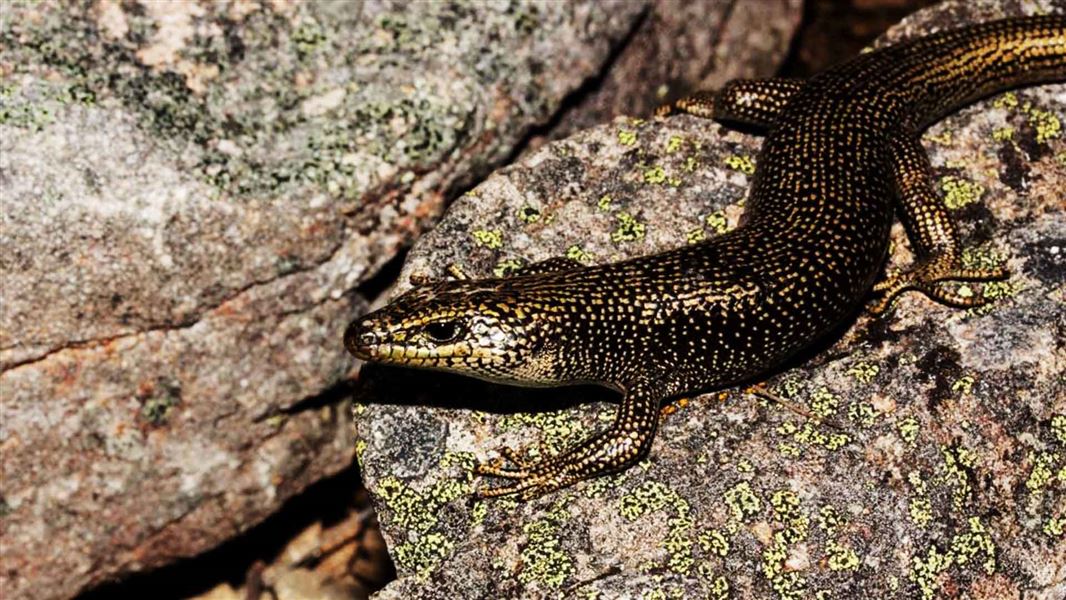Scientific name: Oligosoma aff. waimatense "alpine rock"
New Zealand status: Endemic
Conservation status: Threatened; Nationally Vulnerable
Primary Threats: Unknown but likely mammalian predators, habitat loss and fire
Image gallery
Description
Length: Maximum length is unknown, but could grow up to 110 mm from the tip of the nose to the base of the tail.
Alpine rock skink population: Unknown, but possibly reasonably widespread, but sparse within its known range.
Food: Invertebrates, fruit, nectar.
Distribution
The alpine rock skink is known from two mountain ranges in north Otago, but could extend into south Canterbury. More research on the distribution, habitat use, and altitudinal range of this species is needed. Initial observations suggest that the alpine rock skink is reasonably widespread in some ranges of Oteake Conservation Park, North Otago; however population densities appear low. Surveys currently being undertaken will determine just how widespread and abundant they are.
Challenges
Very little is known about this species, but they seem to exclusively live in alpine greywacke scree slopes and talus. They are currently recorded from 1,200–1,650 m above sea level and so are considered an alpine specialist. Due to the species’ alpine home, it is most likely a slow-growing, late to mature (at least four years) and long lived (to decadal timeframes) species, who produce small litters.
Their scree habitat has islands or edges of tussock grasses and shrubs such as Dracophyllum pronum; however, alpine rock skinks do not seem to show a particular affinity to vegetated areas, often being found several tens of metres from any vegetation on scree or boulders. As such the species is considered strongly saxicolous (or rock dwelling) in nature.
What we’re doing to learn more
We are focused on understanding the species distribution and density. Interestingly, those surveying this species see very few adults, so we are also interested in understanding whether there are genuinely fewer adults in the population, or whether the adults are more secretive.
How you can help
We are very keen to learn of any sightings of lizards in the alpine zone of South Island mountains – the area above the tree and shrub zones. If you have seen a lizard in the alpine zone, we would like to hear from you. Send us:
- a photo of the lizard
- a photo of the area where you found it
- exact location information.
Send your information to: lizardresearch@doc.govt.nz
